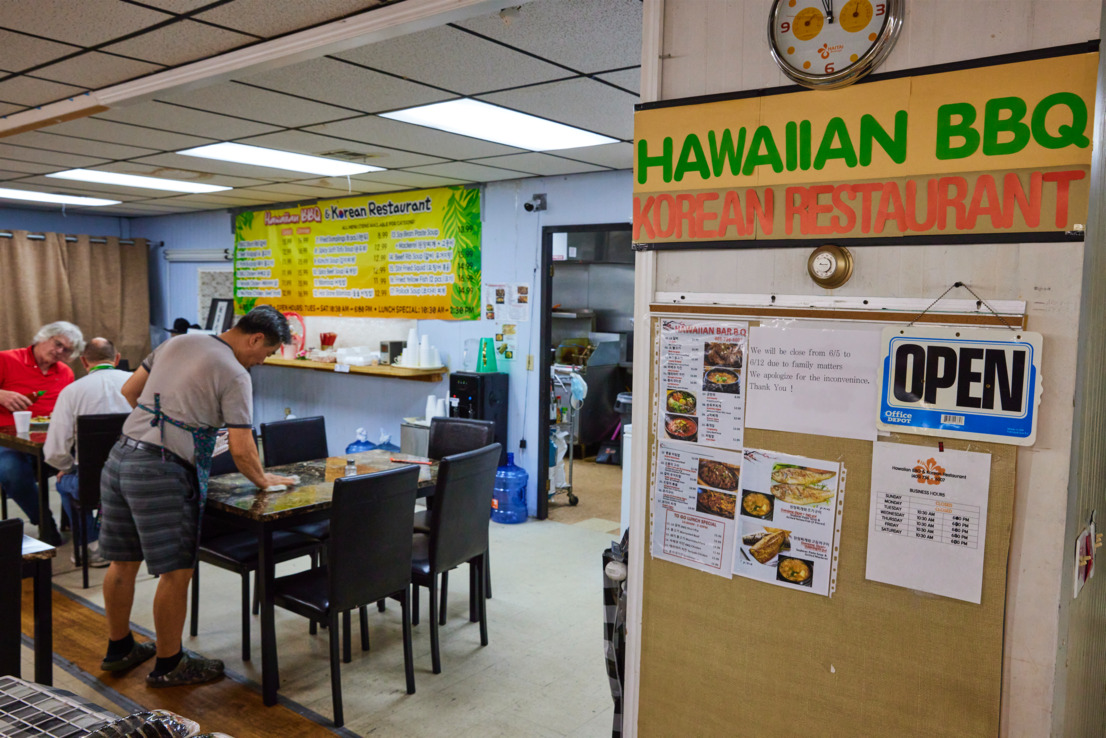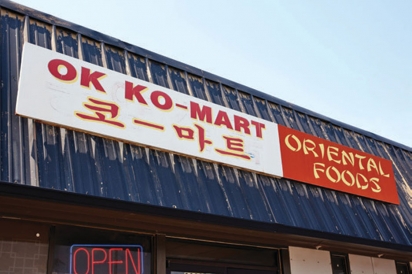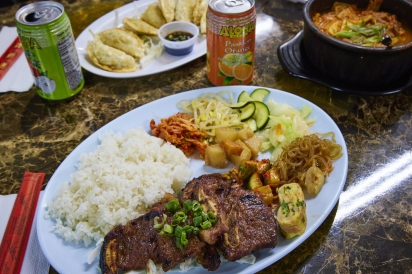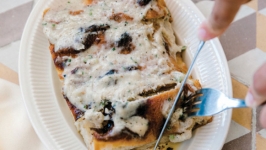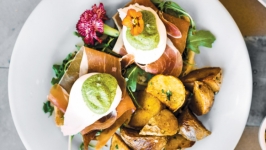Hawaiian BBQ & The Hallyu
Obscured by both name and location, Hawaiian BBQ is a hole-in-the-wall Korean restaurant within Midwest City’s OK KO-Mart Oriental Foods. I frequented KO-Mart with my Korean mother growing up. It had different owners then and, according to my mother, an endearing name that translated to “grandma store.”
A precursor to the explosion of Korean culture worldwide, termed hallyu or “Korean Wave” by Chinese observers, and prior to the current Korean food craze (Korean fried chicken, Korean corn dogs, and Korean BBQ in OKC alone), KO-Mart and the Korean community’s patronage have endured for decades. This is more than I can say for myself. I attended weekend Korean Culture & Language School of Oklahoma classes as a child, but moved to Los Angeles for college and the beginnings of a film career. My grasp of Korean was timid and, as a half-Korean and half-Italian second-generation American, the visible connection to my Korean heritage was at times unclear.
I returned to Oklahoma City six years later, curious about living here by choice. On my last trip to KO-Mart, I had been following my mother on an errand, daydreaming from the backseat window with a Melona ice pop. This time, my boyfriend’s hand was in my hand. Braden, OKC born-and-raised, was my guide around the city as I caught up on new and old restaurants. He was adventurous and hungry for anything and had dined in every restaurant on my list, except for Hawaiian BBQ. This was my turn to be his guide and my first visit without my mother.
The owners knew my mother as a familiar customer and fellow Korean. Without her anchoring presence, my ethnicity felt unclear and my elementary language proficiency unhelpful. For all they knew, I was inspired by the hallyu. The night before I practiced enunciating “thank you” in Korean, trying to match the melodic and higher-register voice my mother uses when speaking with Korean elders or strangers.
We curved along I-40 East to Midwest City one humid Saturday afternoon on a quest for Korean groceries, lunch, and the loose, comforting shape of a memory.
As we approached the entrance to KO-Mart, one door was propped wide open, as if saying, “Don’t be shy.” The interior had shrunk as I had grown. To the right: a narrow aisle stacked with 20-pound bags of rice, rows of dry noodles, and walls lined with freezers. To the left: the checkout counter and aisles of rice cookers, gold ramen pots, and mortar and pestle sets. Hidden by shelves near the back wall, the top of a kitchen door frame peered out.
I could have guided us directly to the spicy seafood crackers or the coffee-flavored hard candies blindfolded. The cramped aisles opened to light blue walls and a small collection of four black marbled tables cooled by portable oscillating fans.
Korean chatter lit up my ears as I recognized a few familiar words and expressions. Only one other group was dining: a Korean grandmother, mother, and child. We were seated at a table in the corner and, with Braden across from me instead of my mother, we were greeted in English. Relieved and disappointed, I was sure they didn’t recognize I was Korean.
As we enjoyed the cool, intermittent breeze, I noticed the massive orange banner clinging to the wall that read: “Hawaiian BBQ & Korean Restaurant.” I wondered if the kitchen offered both Korean and Hawaiian dishes to attract more customers. But as I scanned the English menu, I knew this was, by and large, the same Korean restaurant.
The owner brought water poured from a water cooler against the wall in white styrofoam cups. An informal, yet self-assured presentation that says: The food will speak for itself.
“I’ll have the LA galbi,” I said. This sentence might have demonstrated my Korean culinary vocabulary (galbi translates to “BBQ short rib”) and that I was savvy enough to include LA, which means either laterally cut through the rib bone or Los Angeles, where Korean immigrants originally modified regular galbi. But, my enunciation of “galbi” fell flat and the owner looked puzzled. I resorted to English. Braden ordered bibimbap.
The owner brought us banchan (side dishes) in a compartmentalized styrofoam school lunch tray: kimchi, kongnamul (seasoned soybean sprouts), odeng (fishcakes), japchae (sweet potato noodles), hobak bokkeum (stir-fried zucchini), and potato salad. I often look forward to banchan the most, filling up on two or three refills of my favorite sides before the main arrives. This time, the standout was kongnamul, crunchy and nutty with sesame oil. Following the disposable picnic theme, my bowl of rice arrived in a styrofoam bowl. The LA galbi came sizzling on a hot stone plate and the bibimbap steamed from a hot stone bowl, the sight and sound alone an appetizer. We ate.
The LA galbi was grilled to perfection with slightly crispy ends, and drenched in a balanced sweet and savory marinade. I licked the bones clean. The bulgogi in Braden’s bibimbap was hot, juicy, and sweeter than the LA galbi, as it should be. The rice was fluffy and not too sticky. It was the type of Korean food we would go out and eat together on occasion, often with my mother’s friends. For a moment, I was a child again.
I had been oblivious to what it must have meant for my mother to have a real Korean restaurant. Now, I appreciated its quiet endurance, its no-frills attitude, and its commitment to classic Korean dishes. I felt a newfound sense of pride at its role in my childhood. I wanted it to have a more active presence in my life, knowing it had the potential to be loved by others, if only they knew of its existence. I vowed to mention it at any opportunity as we walked to the front to pay.
Identified less from words than inflections, I listened to the owner and the grandmother who had dined next to us gossip at the register, a sure sign of an active community engaged with each others’ lives, equal parts judgment and care.
When we stepped up to the counter, the owner mentioned they were getting more non-Korean customers as Korean food became popular. He taught us a phrase. “Gam-sa-ham-ni-da,” he said slowly. “That means thank you.” He looked up at me with a happy glint in his eyes, waiting for me to repeat the word I practiced the night before.
I could have just said it and he would smile and say “Good job,” and then swipe my card. This was probably his routine with non-Koreans. I hesitated. “I know it means thank you. I’m half Korean,” I wanted to declare.
But, I didn’t want to disrupt the flow of our pleasant interaction. Perhaps it was not so bad to finish playing it out, to thank him for the delicious food. Instead of asserting my Korean heritage, I would remain anonymous, another curious person dropped into their hidden restaurant by the hallyu, left full and satisfied. I wanted to repeat the words, but I felt shy and humbled. Instead, I smiled and bowed my head. “Oh. Thank you.”


